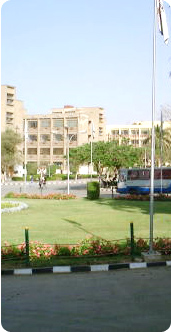
Figure 1.
General structure of final synthesized derivatives.
![Synthetic Scheme for 1,2,4-triazolo[3,4-b][1,3,4]thiadiazine bearing substituted ...](http://ars.els-cdn.com/content/image/1-s2.0-S187853521500218X-gr2.jpg)
Scheme 1.
Synthetic Scheme for 1,2,4-triazolo[3,4-b][1,3,4]thiadiazine bearing substituted phenylquinolin-2-one (4a–4t). Where R = H, 2-Br, 3-Br, 4-Br, 2-Cl, 3-Cl, 4-Cl, 2-F, 3-F, 4-F, 2-NO2, 3-NO2, 4-NO2, 2-CH3, 3-CH3, 4-CH3, 2-OCH3, 3-OCH3, 4-OCH3, 3,4,5-t-OCH3. Reagents and conditions: (a) C2H5OH, Nitrobenzene, Con. H2SO4, reflux, 80 °C, 4 h; (b) chloroacetic acid, NaHCO3, water, CuO, reflux, 80 °C, 5 h; (c) thiocarbohydrazide, Δ, 2 h; (d) phenacyl bromide, anhydrous ethanol, NH4OH, 50 °C, 6 h.
In the present work twenty derivatives of
phenylquinoline-1,2,4-triazolothiadiazines were synthesized. The
structures of the synthesized compounds were established by spectral
data. According to IR spectroscopic data compounds (
4a–
4t) showed peaks at 1306–1330 cm
−1, 650–682 cm
−1 due to -N

C and C

S

C stretching vibrations respectively and no absorption peaks at 3140–3280 cm
−1, 3050–3090 cm
−1 due to -NH
2 and -SH groups respectively indicated smooth cyclization of triazoles leading to the formation of thiadiazine ring. Further,
1H NMR spectra of the synthesized compounds were confirmed by the appearance of S

CH
2 proton of 1,3,4-thiadiazine ring at 4.40–4.54 ppm and

CH
2
proton at 5.97–6.20 ppm as broad singlet. All other aromatic protons
were observed at expected region. Mass spectra (ESI-MS) of all the
synthesized compounds showed molecular ion [M + H]
+ peak in agreement with their molecular formula. Physical and elemental analyses are listed in
Table 1.
2.6.20.
6,7,8-Trimethoxy-4-phenyl-1-({6-phenyl-7H-[1,2,4]triazolo[3,4-b][1,3,4]thiadiazin-3-yl}methyl)-1,2-dihydroquinolin-2-one
(4t)
White needle Crystal; IR (KBr, cm
−1): 3023 (Ar C

H str), 2901 (Aliphatic C

H str),1706 (C

O str), 1620 (C

N str), 1564 (C

C str), 1330 (Ar C

N str), 683 (C

S

C);
1H NMR (CDCl
3, 300 MHz): δ (ppm): 3.84 (s, 9H, 3xOCH
3), 4.51 (s, 2H, S

CH
2
), 5.98 (s, 2H, CH
2), 6.85 (s, 1H, CH

), 7.45(d, 2H,
J = 8.5 Hz, Ar

H), 7.48(m,5H, Ar

H), 7.74 (q, 4H, Ar

H). ESI-MS (
m/
z) calcd. is 539.6, found 540.7 [M + H]
+; anal. calcd. for C
29H
25N
5O
4S (539.60): C 64.55, H 4.67, N 12.98; found: C 64.54, H 4.63, N 12.95.

Available online 11 July 2015
ORIGINAL ARTICLE
Synthesis,
characterization and antimicrobial evaluation of some novel
1,2,4-triazolo[3,4-b][1,3,4]thiadiazine bearing substituted
phenylquinolin-2-one moiety
- a Department of Pharmaceutical Sciences, Faculty of Health Sciences, Allahabad, Uttar Pradesh 211007, India
- b Department of Pharmaceutical Chemistry, United Institute of Pharmacy, UPSIDC, Naini, Allahabad, Uttar Pradesh 211010, India
- Received 3 April 2014, Accepted 7 July 2015, Available online 11 July 2015
- http://www.sciencedirect.com/science/article/pii/S187853521500218X
- doi:10.1016/j.arabjc.2015.07.003
////////











![Synthetic Scheme for 1,2,4-triazolo[3,4-b][1,3,4]thiadiazine bearing substituted ...](http://ars.els-cdn.com/content/image/1-s2.0-S187853521500218X-gr2.jpg)
 C and C
C and C S
S